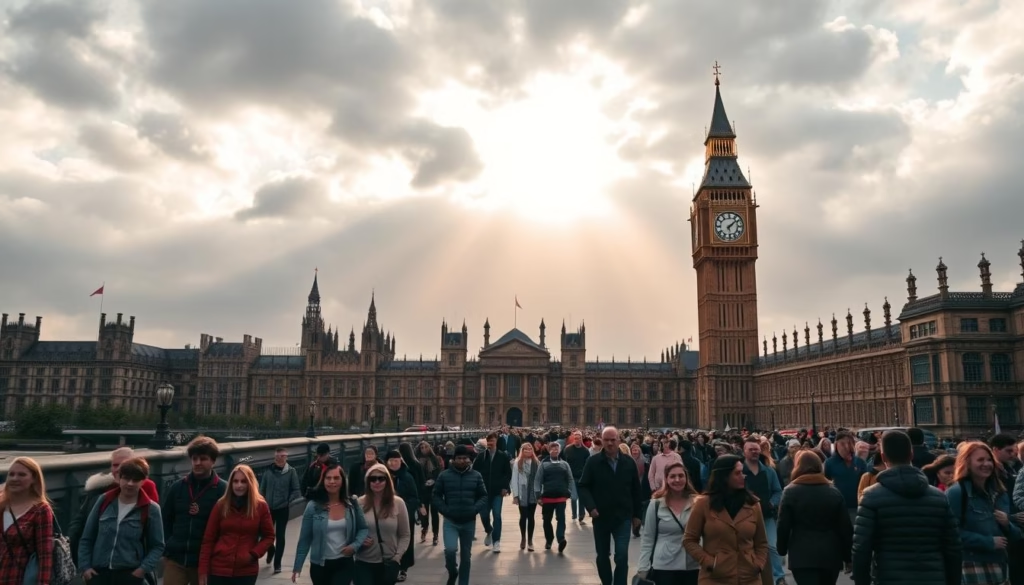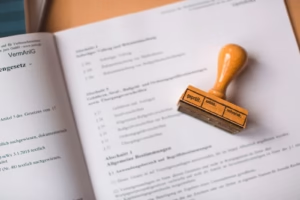Let me tell you about the policy shift that’s reshaping how people secure their future in Britain. Imagine trying to follow a recipe, only to discover someone swapped half the ingredients—that’s what applying for British citizenship feels like after February 2025. The updates aren’t just minor adjustments; they’re a complete overhaul of how eligibility gets assessed.
Here’s the biggest takeaway: If you entered the country without proper authorization—even decades ago—that detail now carries far heavier consequences. Before, past mistakes might’ve faded into the background after ten years. Now? They’re front and center during evaluations. Applications submitted before February 10, 2025, still follow the old playbook, but anything after faces stricter scrutiny.
Think of it like a sudden rule change in a board game you’ve played for years. You need to relearn strategies quickly. That’s why understanding these updates matters—whether you’re just starting your journey or finalizing paperwork. I’ve broken down the essentials so you can navigate this new landscape confidently.
Key Takeaways
- February 2025 marks a hard cutoff for updated eligibility criteria
- Past unauthorized entries now permanently affect applications
- Existing cases filed before the deadline use previous guidelines
- “Good character” assessments have stricter historical reach
- Policy shifts prioritize long-term compliance over time-based forgiveness
Introduction to the Changing Landscape of British Citizenship
Imagine building a house only to find the blueprint’s been redrawn—that’s the new reality for those seeking full integration into British life. The Home Office has overhauled its playbook, turning what was once a structured process into a maze of updated requirements.

Let me break it down: Becoming part of this society isn’t just about holding a passport anymore. It’s your gateway to voting, healthcare access, and career opportunities without restrictions. I’ve seen applications that would’ve sailed through last year now face unexpected hurdles.
What changed? The system shifted from gray areas to strict checklists. Where flexibility once helped applicants overcome past issues, every detail now gets magnified. Think of it like a teacher who suddenly grades old homework assignments—except these grades determine your future.
| Criteria | Previous Approach | Current System |
|---|---|---|
| Flexibility | Case-by-case exceptions | Fixed guidelines |
| Historical Review | 10-year cutoff | Lifetime scrutiny |
| Entry Documentation | Secondary concern | Primary focus |
Confusion runs high—I’ve fielded questions from permanent residents unsure if their decade-old paperwork still holds value. Here’s the truth: Applications filed before February 2025 use older rules. After that? You’re navigating uncharted territory.
This transformation makes citizenship more valuable yet harder to secure. It’s like a membership club tightening entry—except the stakes involve your family’s stability and future opportunities.
Deep Dive into “UK Citizenship rules changes”
Picture a school exam where past mistakes from elementary school suddenly count against your final grade. That’s essentially what the Home Office now does with historical immigration records. Their updated guidance treats every entry without proper authorization like a permanent red mark.
Here’s what stings: If you crossed borders decades ago without clearance, that decision now torpedoes your chances. Before 2025, time healed some wounds. Now? The system acts like an airport security scanner—flagging every irregularity, no matter how old.
Three critical shifts define this overhaul:
- Automatic rejections for anyone who arrived without valid entry documents
- No exceptions for dangerous journeys, even if survival depended on them
- Complete removal of time-based forgiveness in citizenship evaluations
The Home Office guidance reads like a strict teacher’s rubric. I’ve reviewed cases where applicants with 20-year clean records got denied over teenage mistakes. It’s not just harsh—it’s mechanically consistent, like software rejecting files for minor formatting errors.
What does this mean practically? Submit applications before February 2025 if you have complex history. After that deadline, the system loses all flexibility. Think of it as crossing a drawbridge that’s about to rise—once it’s up, there’s no negotiating the moat.
Overview of Recent Updates in UK Citizenship Legislation
Imagine waiting for a train that keeps getting delayed—that’s what securing permanent residency now feels like under proposed updates. The government’s latest white paper reveals plans to stretch the path to permanent status like taffy. What used to take five years could soon demand a decade of patience.
Here’s the twist: Holding Indefinite Leave to Remain (ILR) for one year currently unlocks citizenship eligibility. But if these changes pass, you’ll need ILR for five extra years before even starting the final application process. It’s like being told your graduation ceremony got postponed—after you’ve already rented the cap and gown.
| Criteria | Current System | Proposed Changes |
|---|---|---|
| ILR Qualifying Period | 5 years | 10 years |
| Citizenship Eligibility | 1 year post-ILR | Same, but delayed start |
| Application Timing | Predictable timeline | Uncertainty for mid-process cases |
I’ve seen clients panic about retroactive rules. Will their progress reset? The answer’s murky. One client who’s three years into their ILR journey asked me: “Do I get grandfathered in?” The white paper doesn’t say—it’s Schrödinger’s policy until finalized.
These shifts aren’t just about waiting longer. They signal a philosophical change in how authorities view integration. Becoming part of this society might soon feel like earning a black belt—years of tests with no guarantees.
My advice? If you’re eligible now, treat every day like a closing window. Applications submitted before 2025 avoid the extended marathon. After that, expect hurdles higher than ever.
Understanding Naturalisation as the Principal Route
Naturalisation isn’t just a form—it’s your bridge to calling Britain home. Think of it like applying for a driver’s license, except the test lasts years. This path requires precise documentation and patience, but thousands successfully cross it annually.
Eligibility Requirements for Naturalisation
Let me break down the essentials. You’ll need:
- At least 18 years of age
- Valid indefinite leave to remain or EU settled status for 12 months
- Clean immigration history
Marriage to a British citizen acts like a turbo button—skip the 12-month wait if you’ve got settled status. But remember: shortcuts don’t mean lower standards. Missing one requirement? That’s an automatic “no”.
The Application Process and Essential Documents
Gathering paperwork feels like preparing tax returns while blindfolded. You’ll need:
- Proof of residency (5 years minimum)
- Life in the UK test results
- English language certification
I’ve seen applications fail because someone used the wrong shade of blue ink. Treat every detail like evidence in court—exact dates, original stamps, certified translations. Submit early to avoid last-minute panics.
Exploring Citizenship by Birth and Descent
Here’s something that surprises even seasoned travelers: A baby’s first cry on British soil doesn’t guarantee membership in this society. The real magic happens when parental status meets historical timing. Let me explain how this intricate system works.
British Citizenship by Birth Explained
Think of birthright claims like a backstage pass—it only works if your parents had the right credentials. Since January 1, 1983, automatic qualification requires at least one parent to hold either British citizenship or settled status at delivery. This date acts like a legal timestamp—cross it, and different rules apply.
| Birth Scenario | Parent Status | Outcome |
|---|---|---|
| Child born in London 2024 | Mother on student visa | No automatic citizenship |
| Child born in Manchester 1990 | Father with ILR | Citizenship granted |
| Child born in Edinburgh 1982 | Parents undocumented | Pre-1983 rules apply |
Advantages and Limitations of Citizenship by Descent
Heritage claims work like a family heirloom—precious but fragile. If you’re born abroad to British citizens, you inherit their status. But there’s a catch: Your own children won’t qualify unless born in Britain or under special circumstances like diplomatic service.
I once advised a client whose grandfather served in the Royal Navy. His lineage allowed citizenship claims, but his U.S.-born daughter hit a wall. These multi-generational limits remind me of phone batteries—each charge loses potency until you plug back into British soil.
Planning a family? Where you deliver matters as much as DNA. Birth locations create ripple effects across generations—choose wisely if preserving citizenship options matters for your children.
The Role of Registration in Acquiring British Citizenship
Think of registration as a golden ticket for young people who’ve grown roots here but lack formal ties. This path works like a legal safety net, catching those who fall outside strict birthright rules but deserve recognition. I’ve helped families navigate this process—it’s often their last hope when other doors slam shut.
Let me explain why this matters. If you’re under 18 and your parent gains settled status or indefinite leave after your birth, you might qualify. It’s like inheriting a family heirloom—except the treasure is legal belonging. The clock starts ticking at birth, but the real magic happens when parental status changes.
Registration Processes for Under 18s
Here’s what trips people up: The 90-day annual absence rule during your first decade. Imagine a stopwatch resetting every year—exceed that limit once, and your claim crumbles. I once advised a family whose European vacation cost their child’s eligibility. Every trip abroad needs documentation now.
Three scenarios unlock registration:
- Parent becomes a British citizen after your birth
- Parent secures indefinite leave or settled status post-delivery
- You’ve lived here continuously until age 10 with minimal absences
The Home Office reviews these cases with more heart than adult applications. I’ve seen officers approve teens who entered illegally as toddlers—something unimaginable in naturalisation cases. But don’t mistake flexibility for leniency. Missing deadlines or paperwork still spells disaster.
Parents, listen up: If your status changes, your child’s future might too. File before their 18th birthday to avoid adult-level scrutiny. It’s like catching a train—miss it, and the next ride costs ten times more.
Revised Good Character Criteria – What’s New?
Imagine discovering a tattoo you got at 16 now bars you from job opportunities at 40. That’s the reality facing many under tightened good character assessments. The Home Office erased expiration dates on past decisions, turning every immigration choice into permanent ink.
Previously, applicants could outlive youthful mistakes. A decade-old unauthorized entry might get overlooked if recent years showed compliance. Now? That same incident becomes an unshakable shadow.
Impact on Applicants with Past Infractions
I’ve reviewed cases where clients built careers and families here after rough starts. One teacher arrived hidden in a truck 22 years ago. Under old guidance, her clean record since 2005 might have sufficed. Post-2025? Her application faces near-certain refusal.
Changes in Assessing Illegal Entry and Dangerous Journeys
The system now treats desperate choices like calculated crimes. Whether you fled war zones in rubber boats or overstayed visas as a student, the label “illegal entry” sticks forever. Home Office caseworkers must reject these applicants regardless of subsequent contributions.
What keeps me up at night? Genuine refugees who entered irregularly now face lifelong penalties. Their survival strategies become permanent barriers to belonging. Those eligible should file before February 2025—the last train leaving the station of second chances.
Understanding Indefin
Picture a library closing its doors—those inside get to stay, but latecomers face locked gates. That’s the reality for anyone navigating status updates after February 2025. The Home Office isn’t just tweaking forms; they’re rewriting the entire playbook for belonging.
Here’s what matters now: Applications filed before the cutoff use yesterday’s standards. Miss that date? You’ll need flawless history and perfect timing. I’ve seen cases where a single missing document derailed years of preparation—don’t let that be you.
Act fast if your story has complexities. Older entries or past missteps? The current system still offers narrow pathways. Post-deadline, those same situations become dead ends. Treat every day like a shrinking window of opportunity.
This isn’t about fear—it’s about strategy. Gather your paperwork like assembling an emergency kit. Consult experts who’ve navigated these rapids before. Your future self will thank you for moving decisively while options remain.
Remember: Stability often hinges on timing. The difference between approval and rejection might boil down to which side of February 10th you land on. Secure your place before the gates swing shut.



